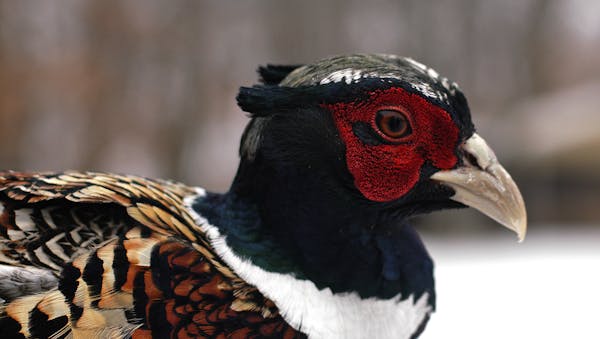People who don't hunt pheasants perhaps think it understandable that 15,000 fewer Minnesotans were afield in the state last year chasing ringnecks than in 2012. After all, the population of these florid fowl — the males are colorful, at least — has been on a steep downward trend in recent autumns, thanks to rising corn and soybean prices and a corresponding falloff in the number of set-aside acres enrolled in the Conservation Reserve Program.
Fewer birds, ergo, fewer hunters, right?
Apparently so.
Still, pheasant hunters who have remained steadfast in their autumn pursuit of these game birds, even when their chances of bagging one or two have been reduced, find perplexing that a sport as alluring, if not as addicting, as pheasant hunting could suffer such steep participation declines, even in times of low bird numbers.
Consider: In 2013, the fewest number of Minnesota pheasant stamps were sold since they were first offered in 1983 — 74,668.
Consider also: According to Department of Natural Resources small game surveys, 56,000 — that's fifty-six thousand — fewer pheasant hunters tramped Minnesota's hinterlands last year than as recently as 2007.
Recall that these numbers don't represent a failure to attract new (young) hunters, which is the broader problem these days facing hunting and fishing and many other outdoor pastimes.
Because of these recruitment failures, hunting and fishing are seeing net participation losses as baby boomers head for the couch — or the grave.
But in the past half-dozen years or so, that's not been the major issue regarding pheasant hunter participation.
The falloff instead during that period speaks to a loss of people who have already participated in the sport; people who presumably have experienced the adrenaline rush of seeing a rooster bust from thick cover and bank against a cobalt sky, who have watched their dogs retrieve these wily birds, sometimes against long odds, and who have experienced the exhilaration that accompanies leg-aching hikes on chilled October or November days — forays that, thrillwise, beat mornings spent on a treadmill or evenings in a yoga studio.
Yet tens of thousands of Minnesota pheasant hunters have gone missing from the sport.
Some who have hung up their scatterguns will make the obvious argument that the state's low pheasant numbers are reason enough to give up on ringnecks.
Farmers also will be assigned a share of the blame for the birds' lost habitat, and the DNR will receive its share of scrutiny.
Fair enough.
But those are easy targets, and the disappearance of 56,000 uplanders can't be laid entirely at their feet.
Instead, the wayward hunters themselves should assess critically why they've sat on the sidelines in recent years, and what the cost of their absence has been to pheasants and pheasant management and, ultimately, to the chance these birds will recover in the near future.
Do the math:
Fifty-six thousand hunters times the price of a pheasant stamp ($8.25) equals $462,000, a sum lost annually to pheasant management when so many hunters stay home.
Add to those funds money that would have been spent on guns, shells, gas and accommodations, and in some cases small-game licenses, and the loss quickly climbs into the millions.
It is true that many who hunt pheasants do so casually, just as many who golf do so only occasionally, or who participate in any other form of recreation.
Still, so many pheasant hunters staying home bodes poorly for the future of these birds, and for conservation in general.
The stakes are high.
Not only is money at risk, so is political support for the return someday of a balanced landscape to Minnesota pheasant country.
At risk also is tradition, an important if ephemeral concept that can disappear in a generation or two.
Pheasants will recover.
Perhaps this will occur when a hardier bird is developed that can withstand tough winters, wet springs and monolithic croplands.
Or perhaps when Minnesotans finally understand that their clean water is at risk until they begin to properly care for the land.
Or maybe when more wildlife-friendly crops are established.
Whatever "it" is, something eventually will occur that benefits pheasants and other wildlife.
But with the loss of so many pheasant hunters, the question is:
Will anyone be around to care?
Dennis Anderson danderson@startribune.com
Anderson: Anglers protesting tough new Mille Lacs rules are wrong

Anderson: Courts, not politicians, should rule on Red Lake, White Earth lands

Anderson: Multimillion windfall gets invasive carp deterrent moving
![A young whitetail deer searches for food as another blanket of snow coats the arrowhead. ] Minnesota -State of Wonders, Arrowhead in Winter BRIAN PETE](https://arc.stimg.co/startribunemedia/WK32UWWY6FKNWJUIYCJ6ZPT4AU.jpg?h=91&w=145&fit=crop&bg=999&crop=faces)
Anderson: In NE Minnesota, DNR staff, habitat and deer all decline


